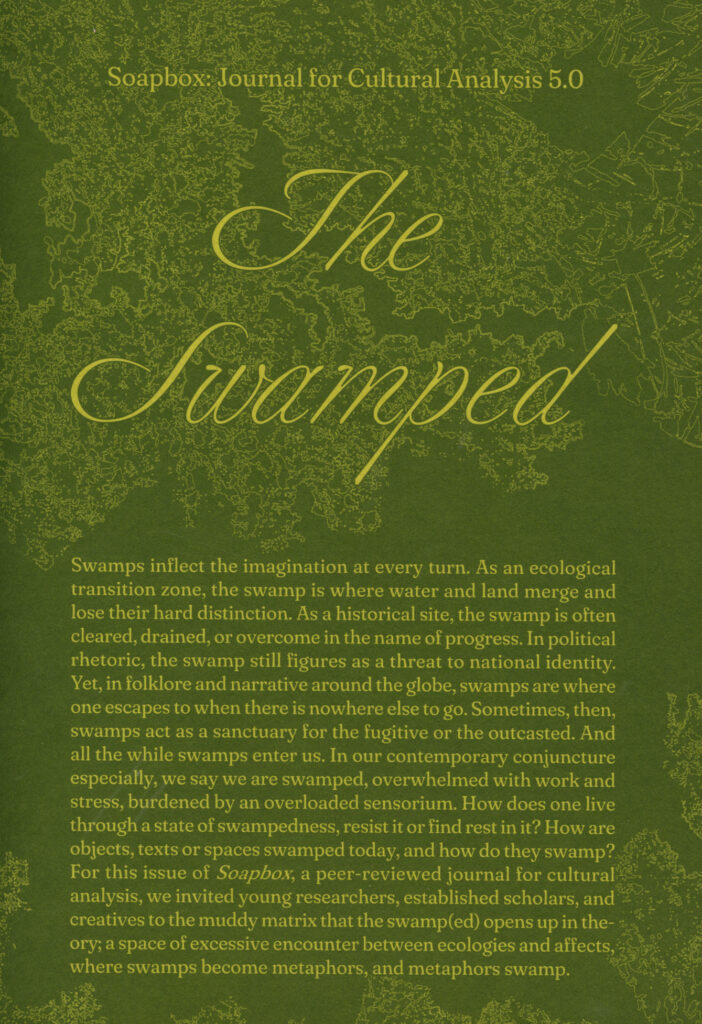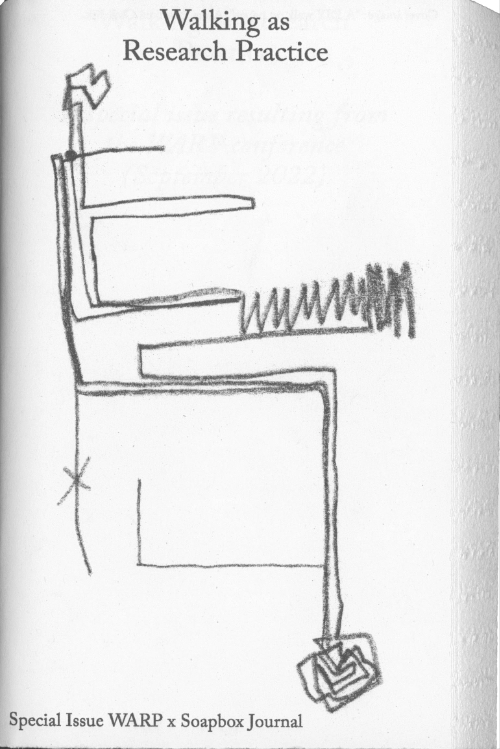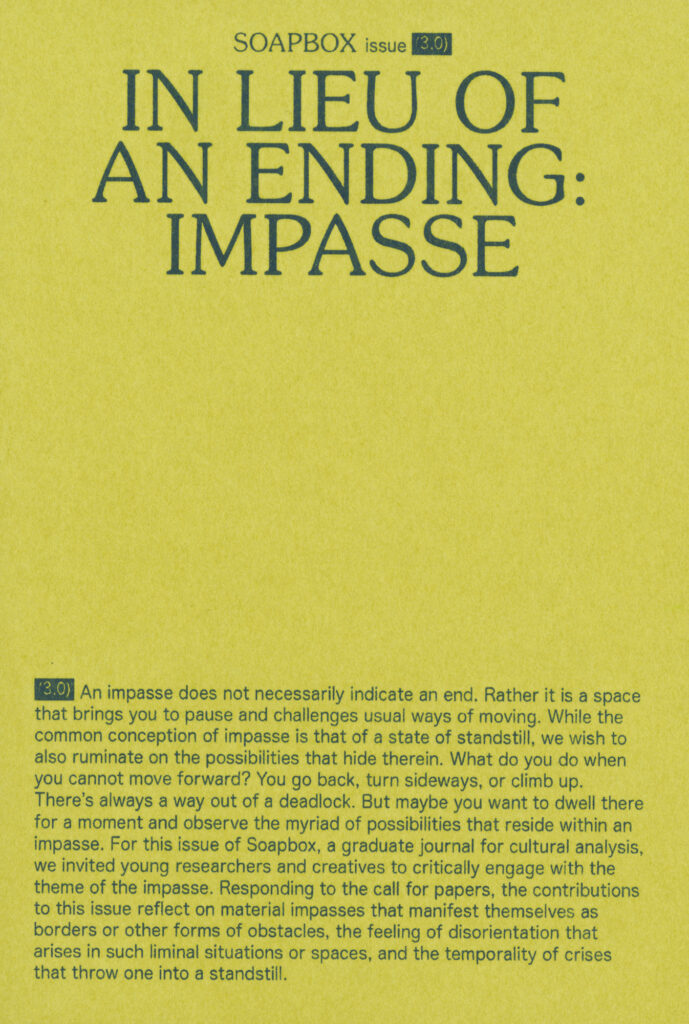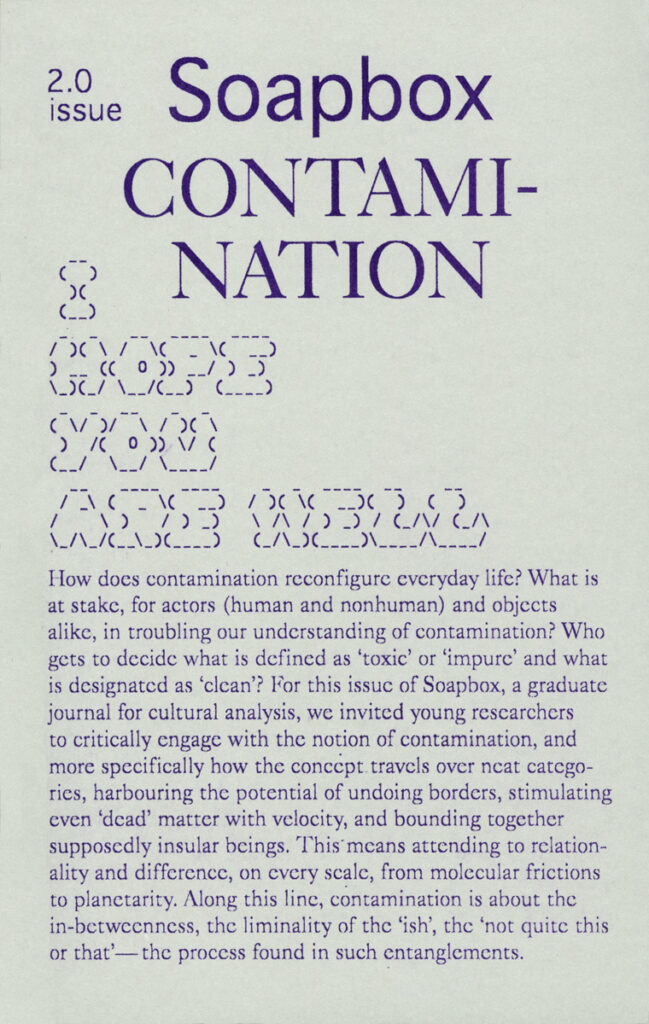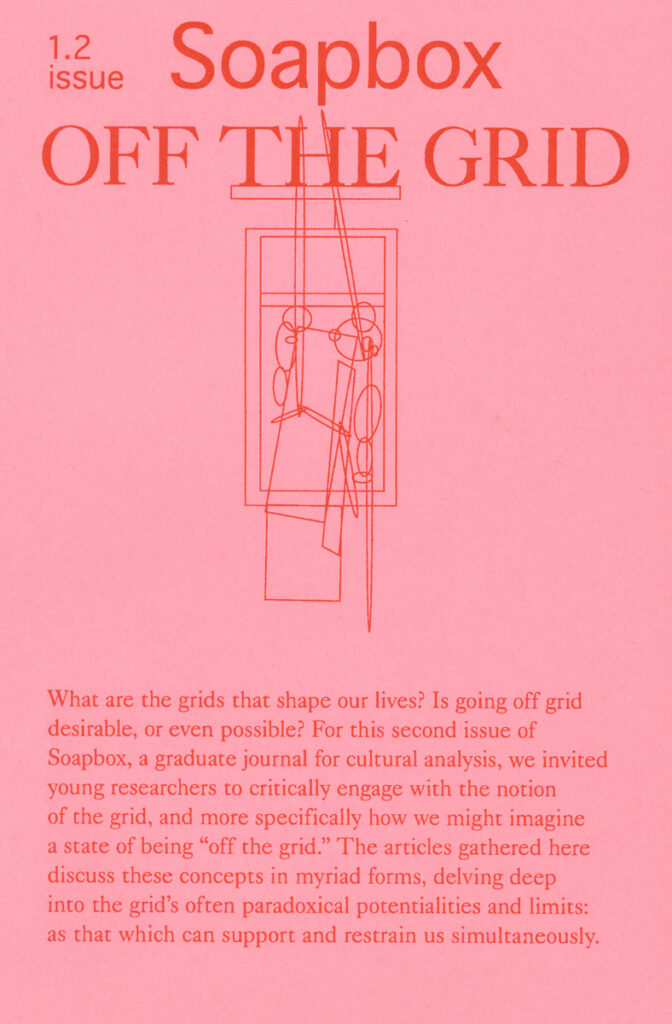Soapbox #5: The Swamped
Swamps inflect the imagination at every turn. As an ecological transition zone, the swamp is where water and land merge and lose their hard distinction. As a historical site, the swamp is often cleared, drained, or overcome in the name of progress. In political rhetoric, the swamp still figures as a threat to national identity. Yet, in folklore and narrative around the globe, swamps are where one escapes to when there is nowhere else to go. Sometimes, then, swamps act as a sanctuary for the fugitive or the outcasted. And all the while swamps enter us. In our contemporary conjuncture especially, we say we are swamped, overwhelmed with work and stress, burdened by an overloaded sensorium. How does one live through a state of swampedness, resist it or find rest in it? How are objects, texts or spaces swamped today, and how do they swamp? For this issue of Soapbox, a peer-reviewed journal for cultural analysis, we invited young researchers, established scholars, and creatives to the muddy matrix that the swamp(ed) opens up in theory; a space of excessive encounter between ecologies and affects, where swamps become metaphors, and metaphors swamp.
